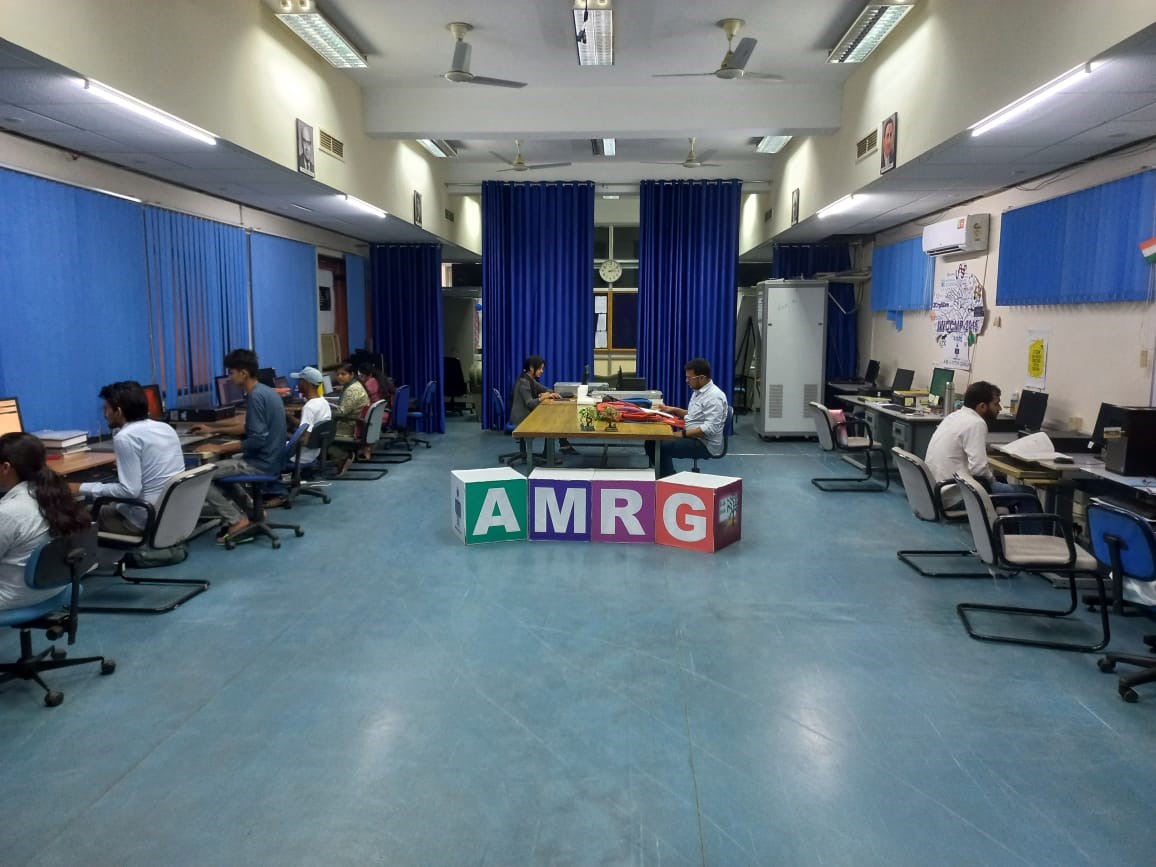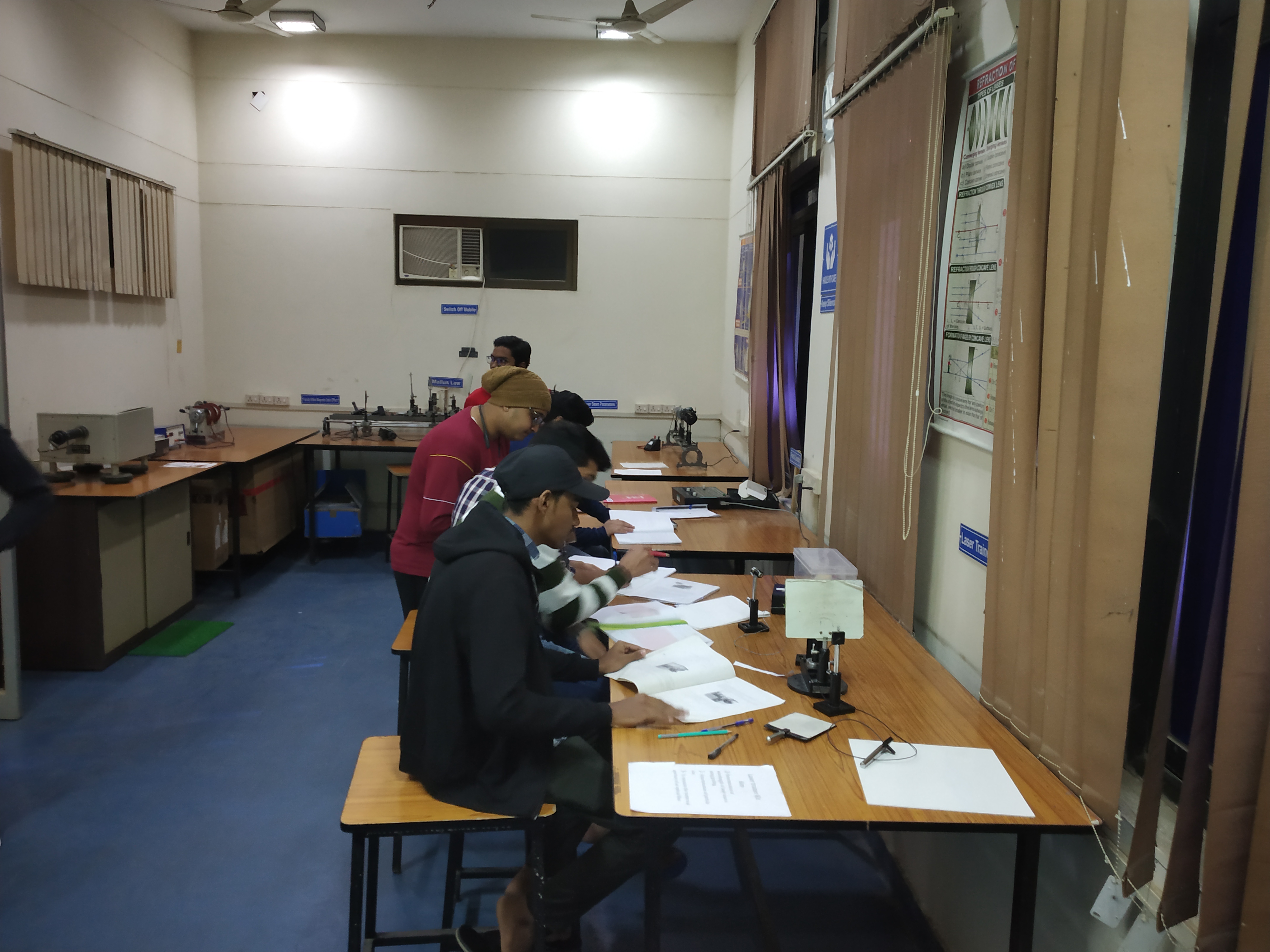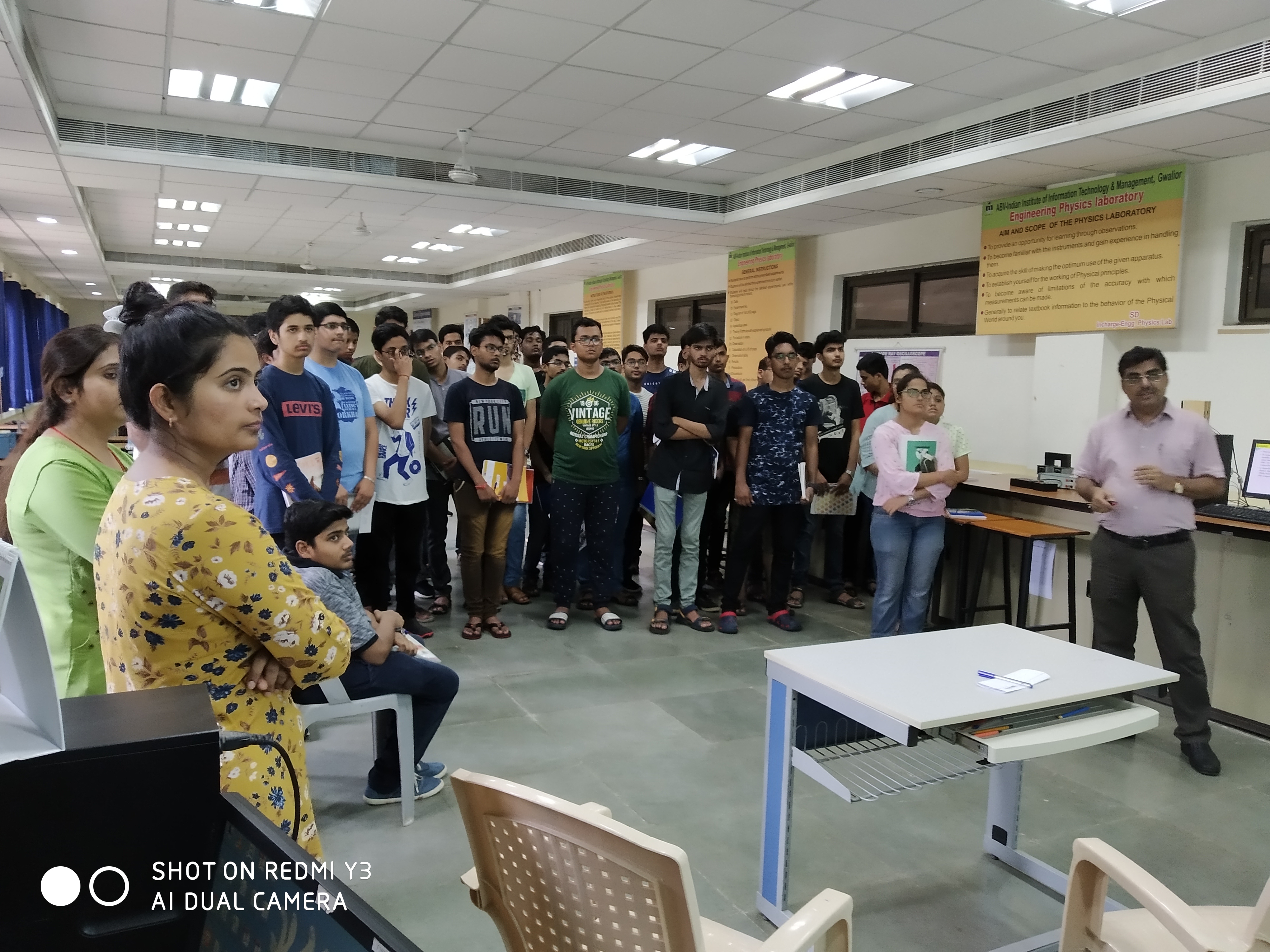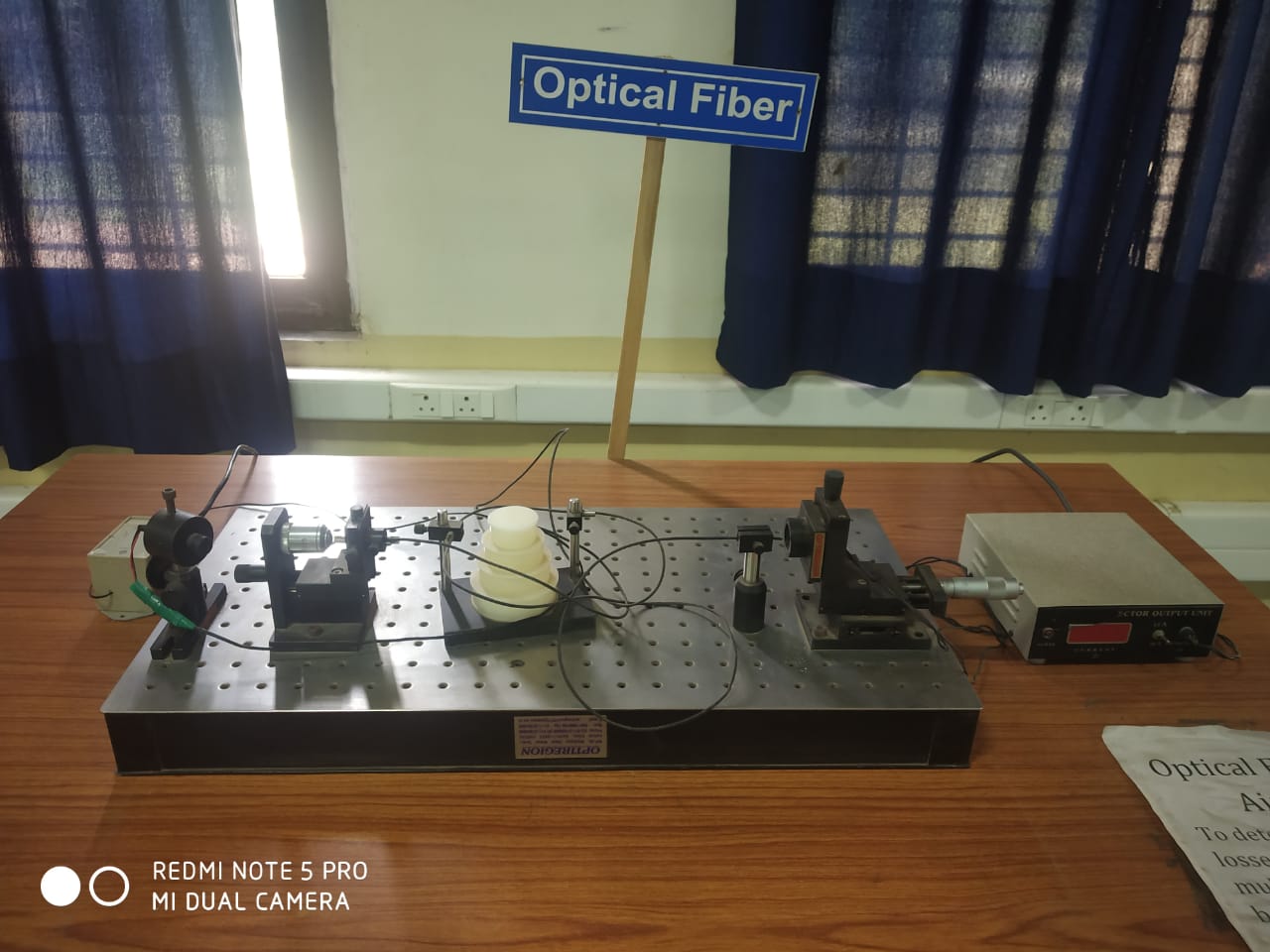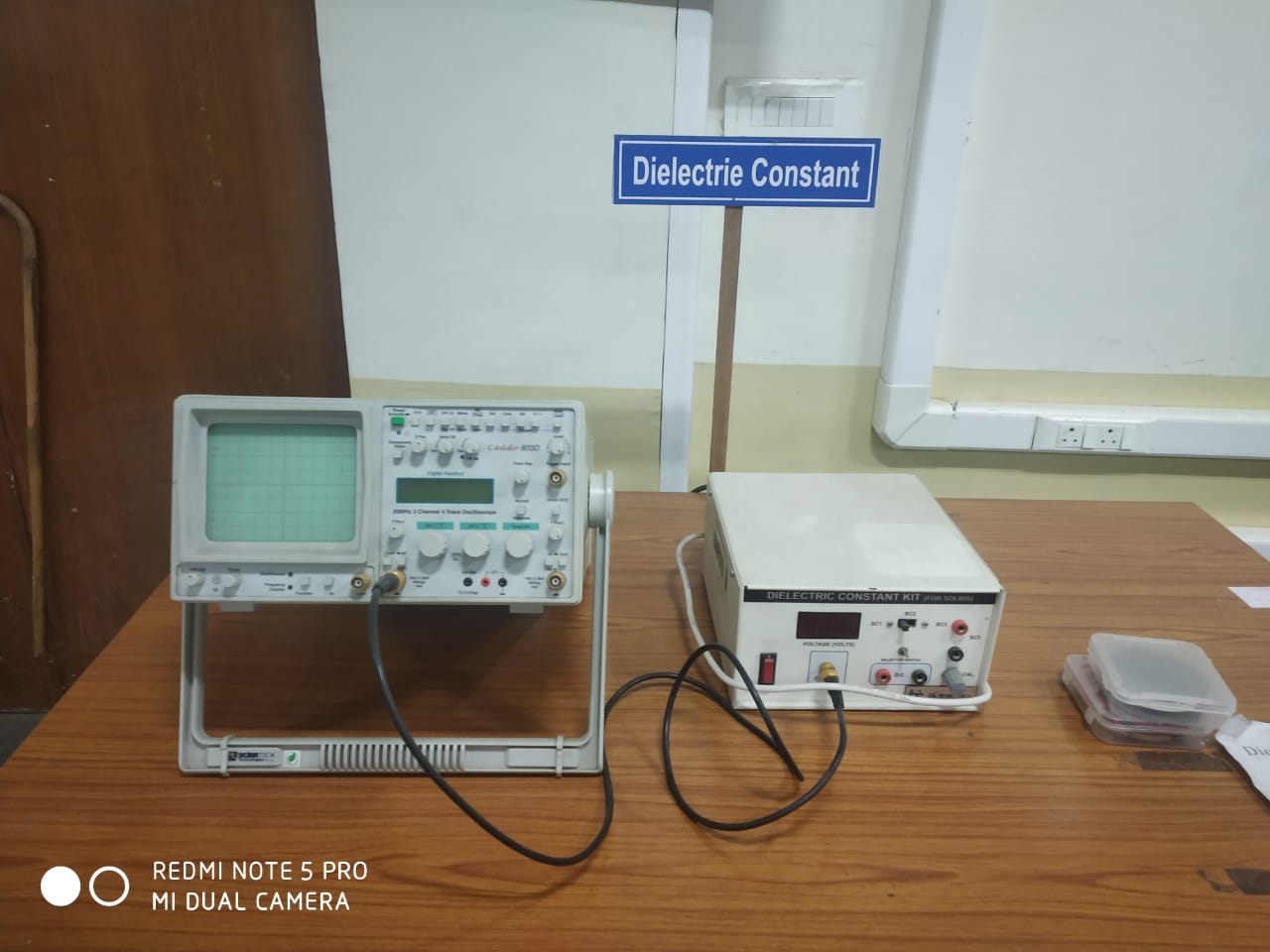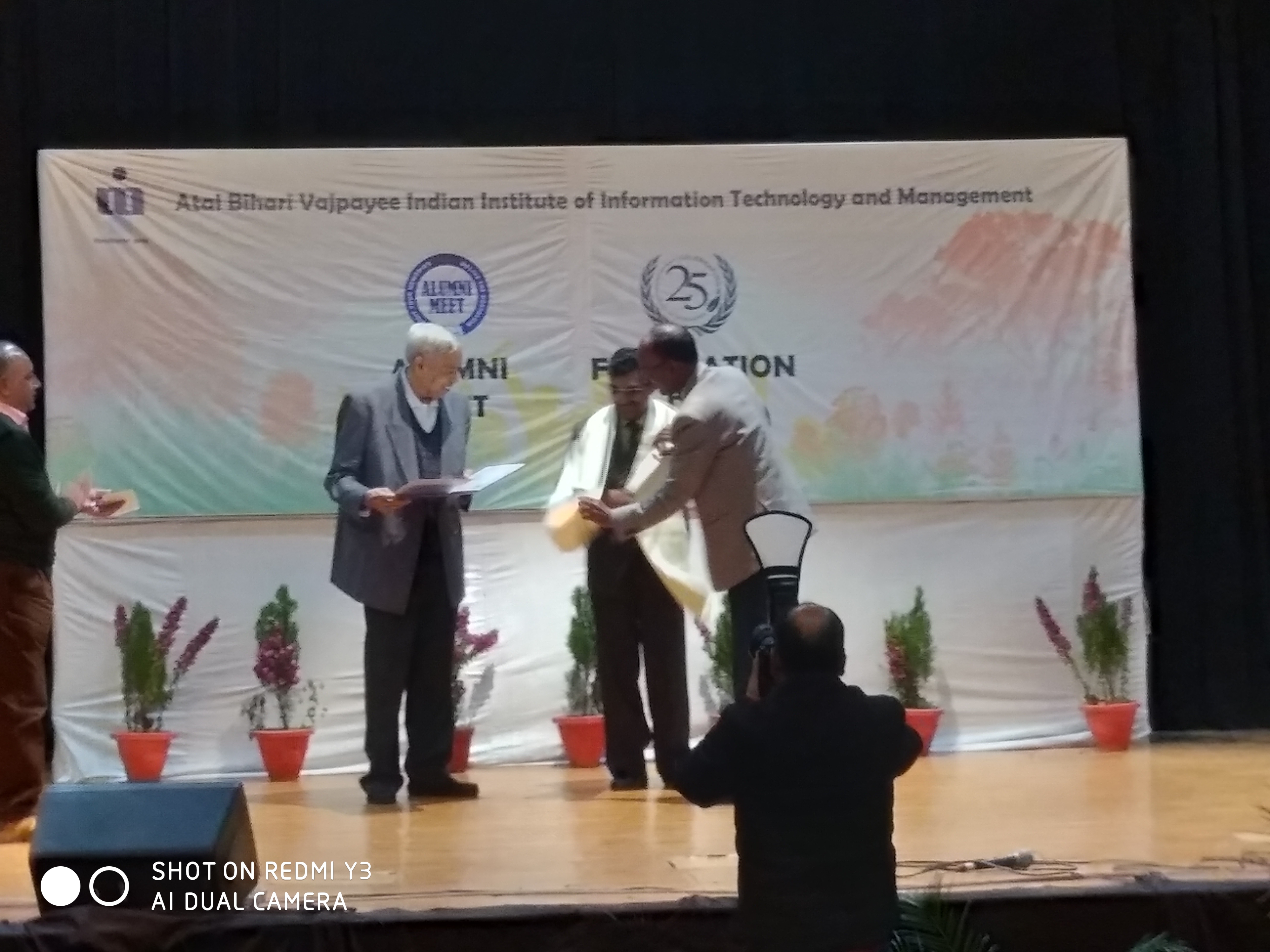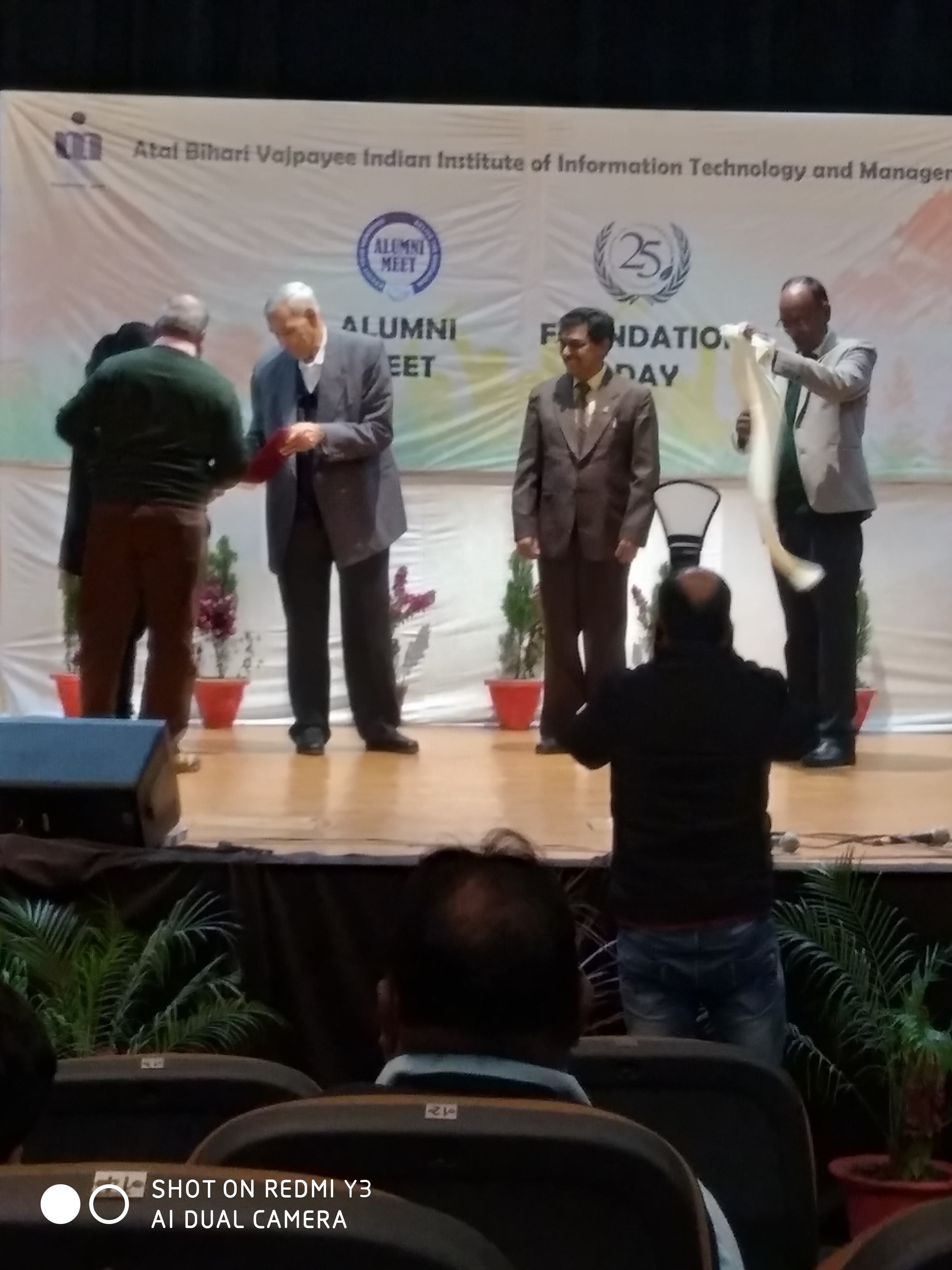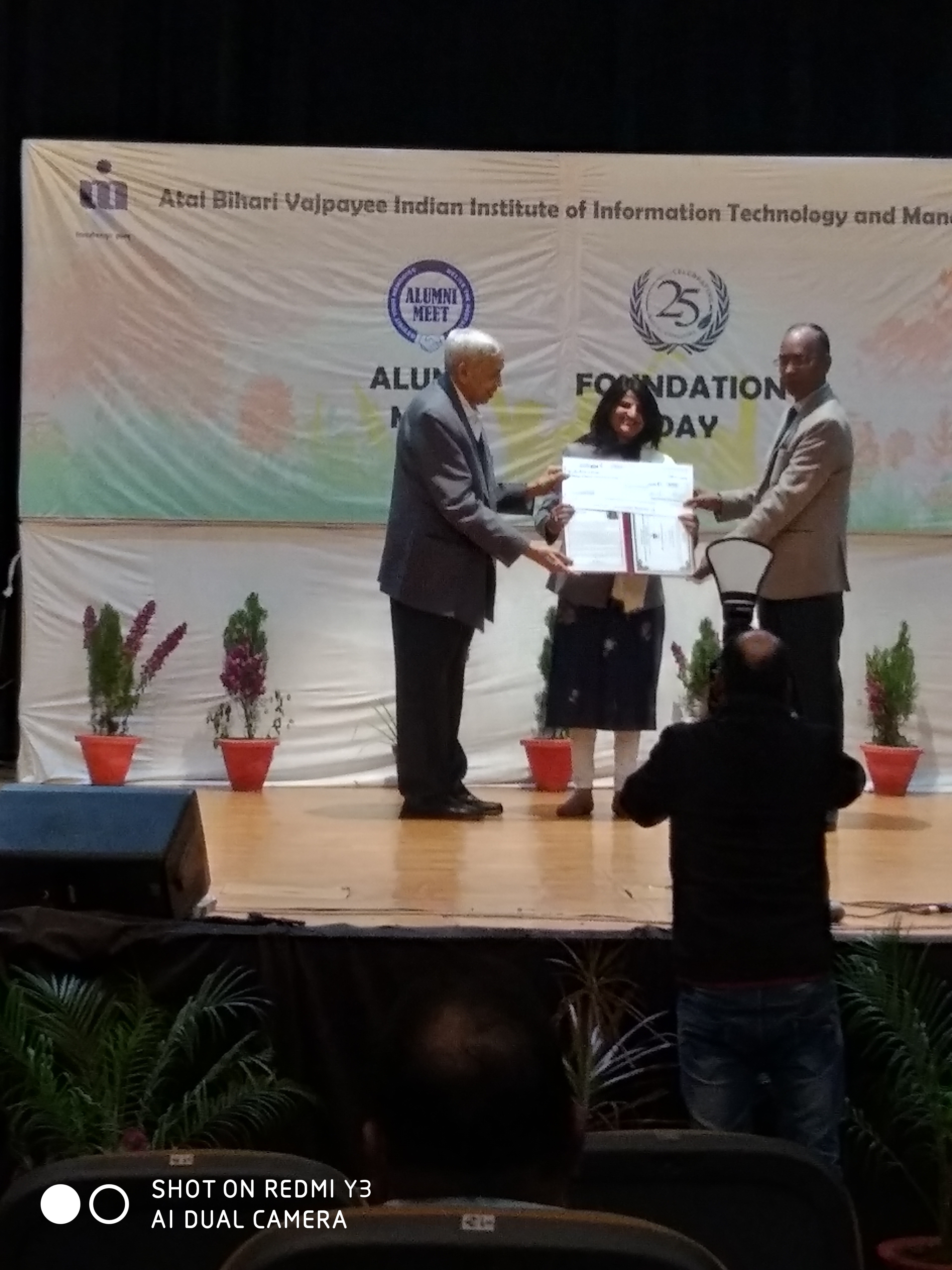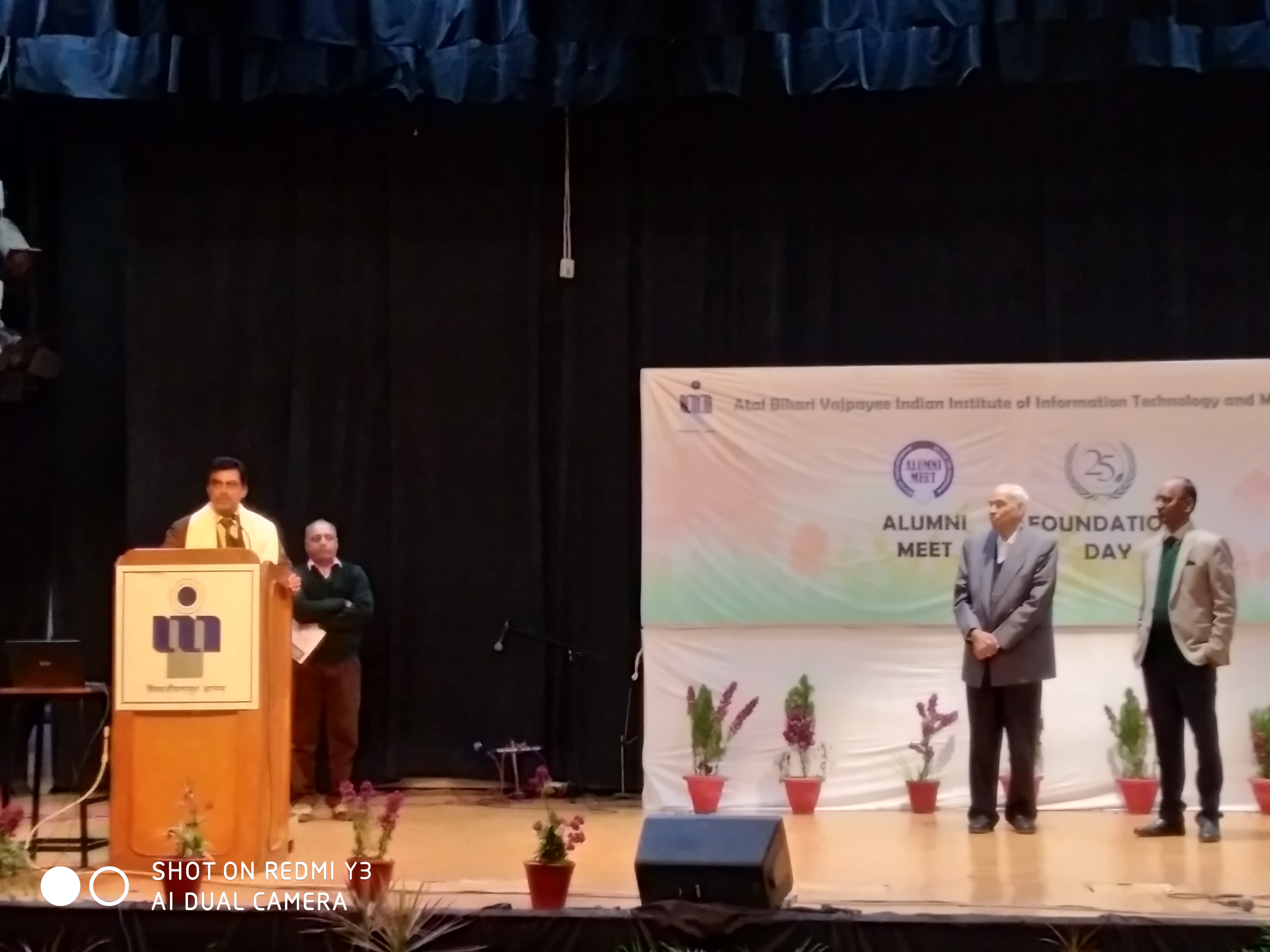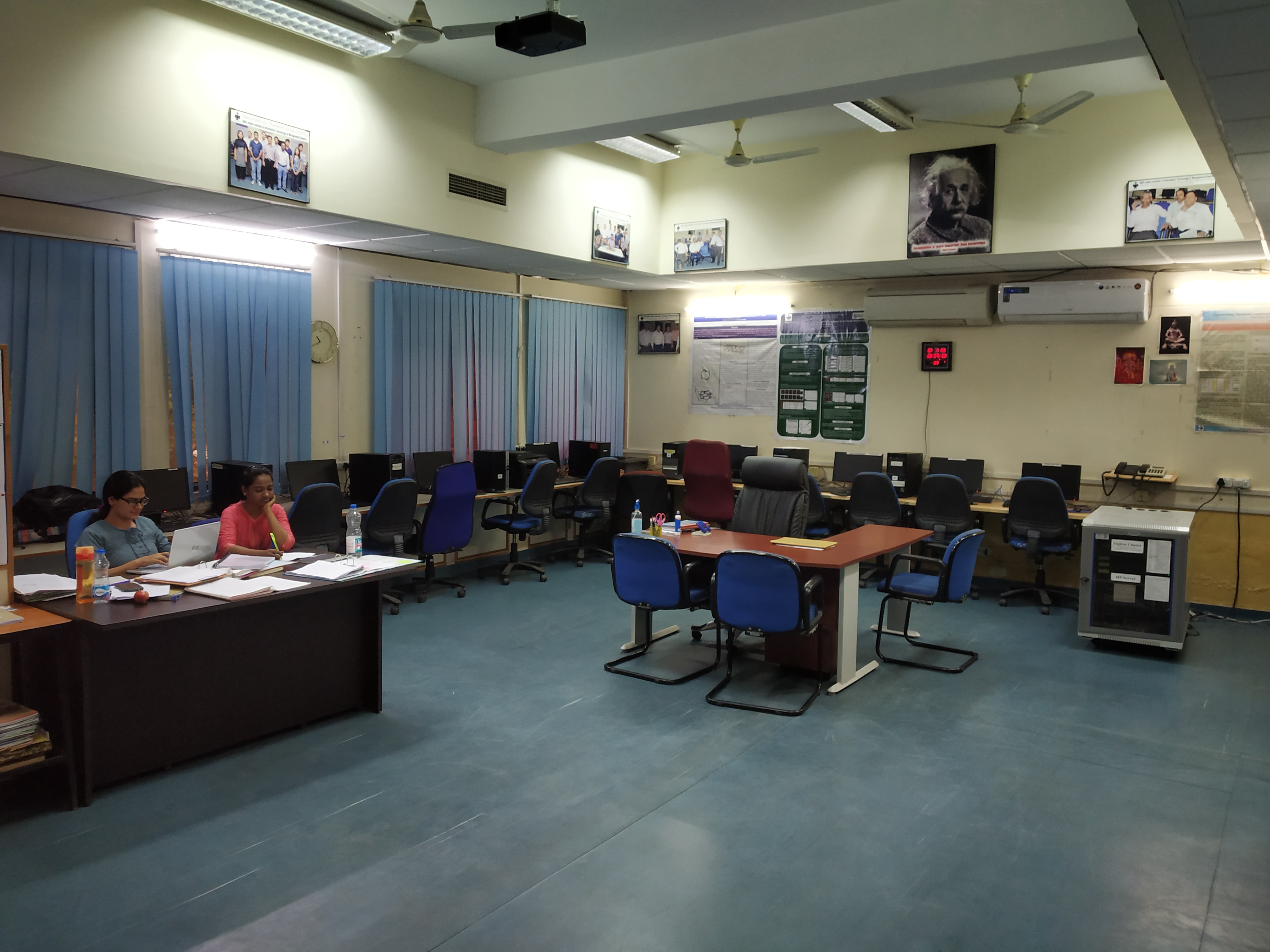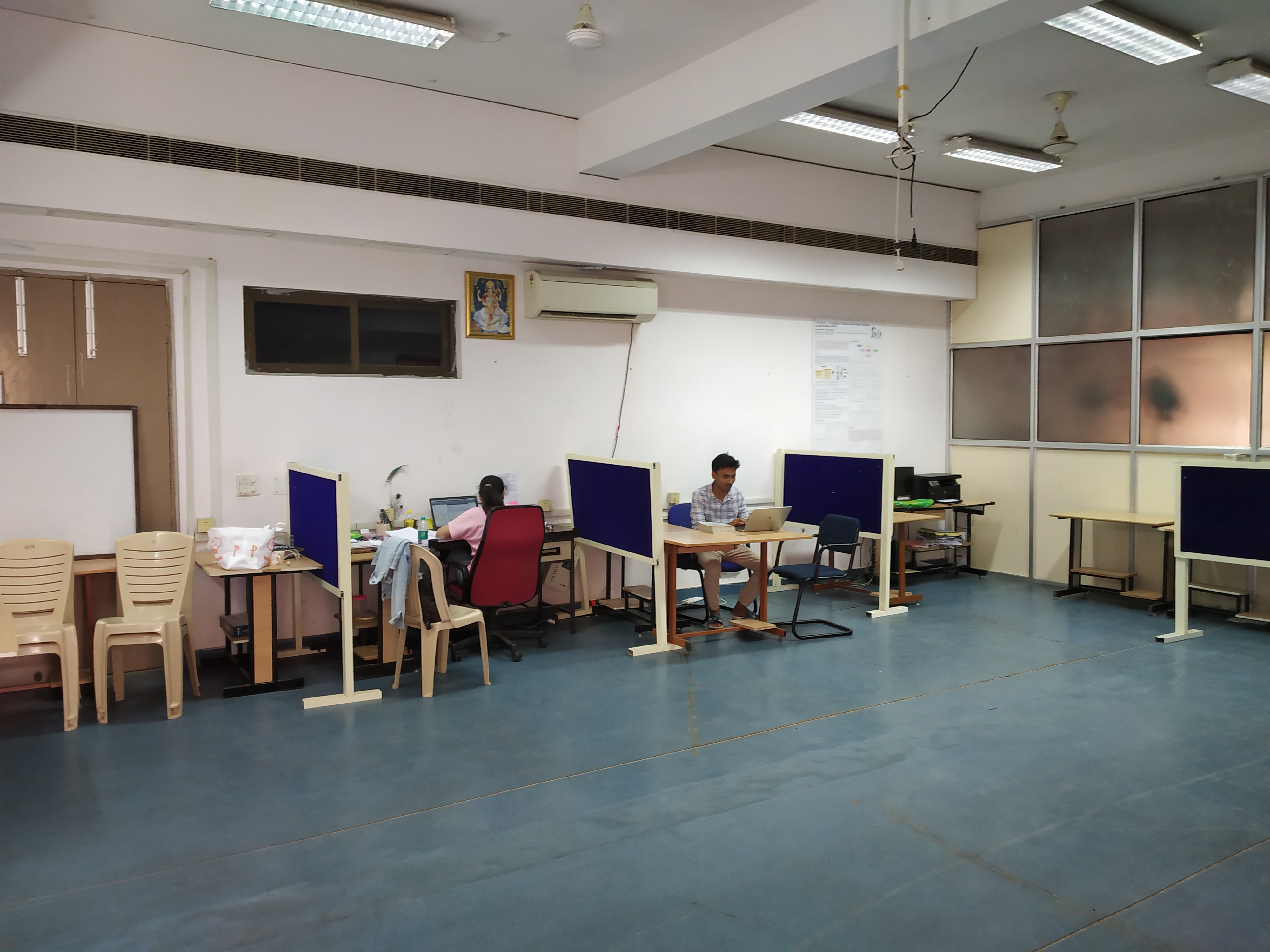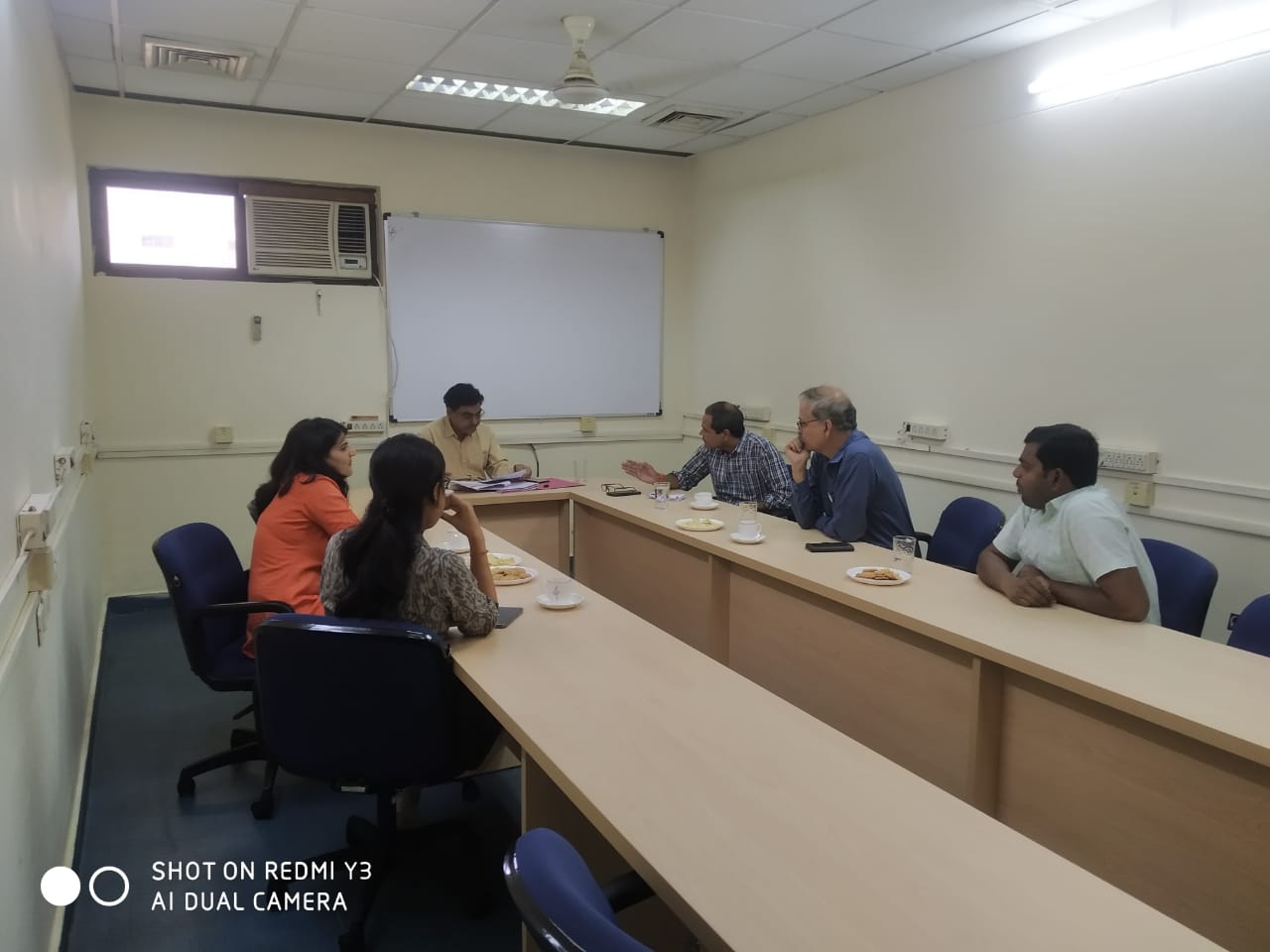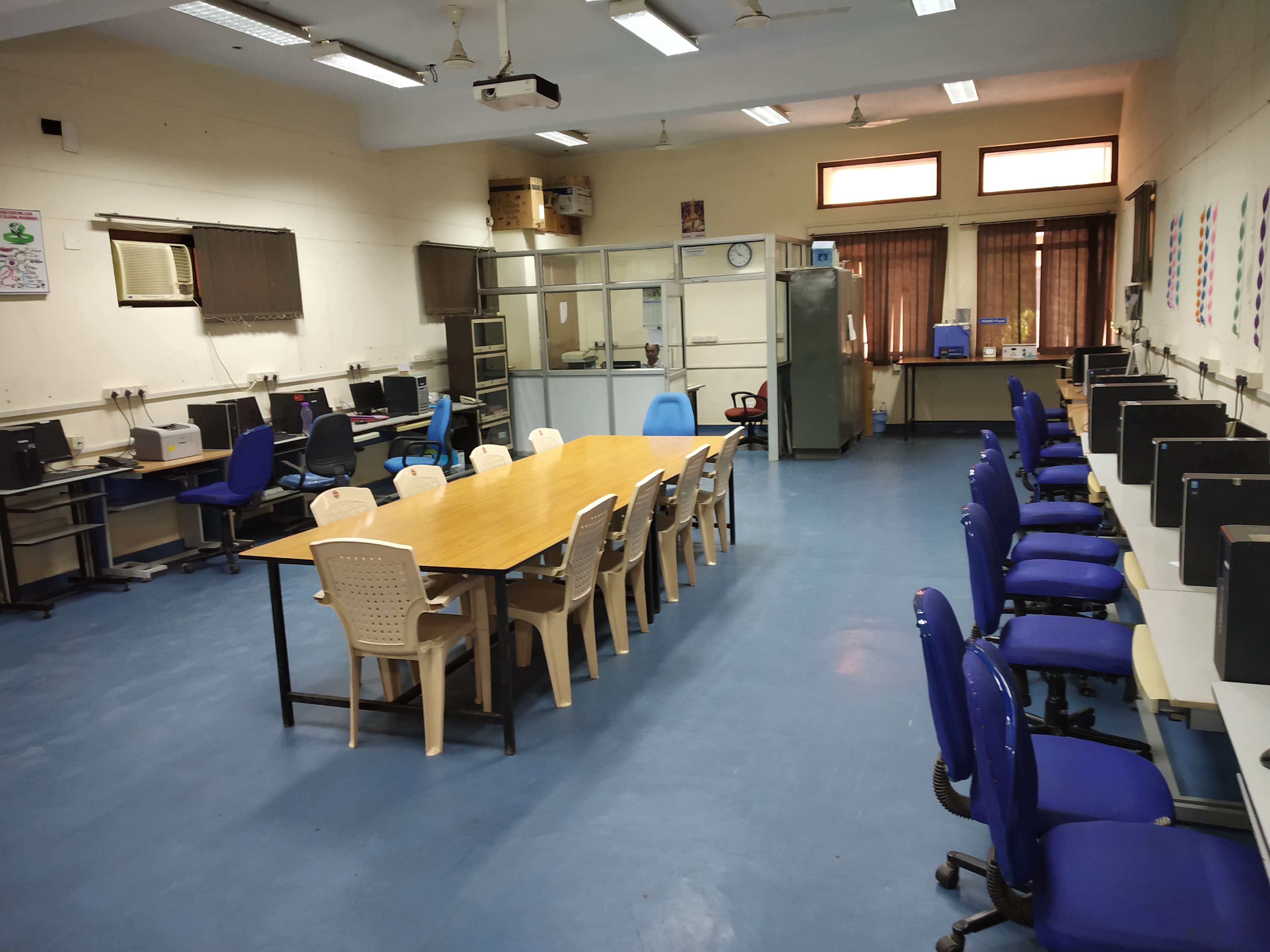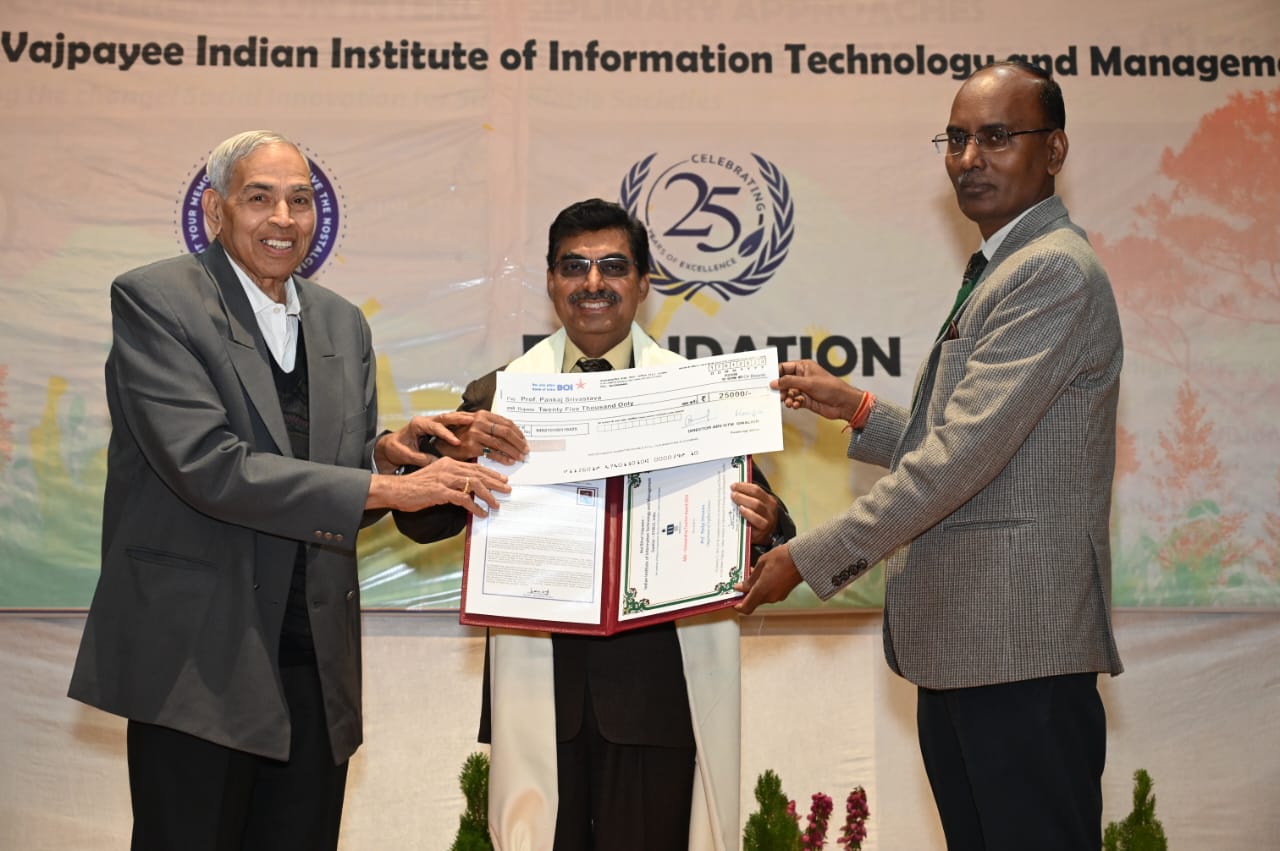
Department of Engineering Sciences
(विज्ञानं सर्वेषां विषयाणां मूलम् अस्ति),
About the Department
Knowledge in basic and Engineering Sciences is an essential ingredient of any professional career. Department of Engineering Sciences of ABV-IIITM, Gwalior aims to fulfil this by fostering the fundamental principles and understanding of Engineering science that are capable of enhancing the students overall learning experience and personality development.
The Department of Applied Sciences was established in July 2022; however, it is renamed as Department of Engineering Sciences in June 2023. The Engineering Sciences faculties are teaching and doing research in this institute since 2006 with a clear motive to equip the engineering students with fundamental and engineering concepts of Physics and Mathematics. The Department is running B.Tech. (Mathematics and Scientific Computing)- 4-year program and PhD programs in Engineering Sciences (Physics & Mathematics) and other related areas to produce high quality researchers in several niche areas of Computational and Engineering Sciences.
The department has a team of highly acclaimed researchers as the faculty members having broad research areas. The department has carried out and completed successfully a large number of sponsored research projects funded by national (DST, DST-SERB, DRDO, MHRD, CSIR) and international organizations. The department has developed several state-of-the-art UG and PG labs and research labs for performing high-end research. Department is closely working with various international collaborating partners from USA, UK, Germany, Japan, Denmark, Ireland and other countries in several research areas of mutual interest. The faculty members of the department have been recognised by various academic bodies within and outside India and have published many research papers in international peer reviewed journals of repute.
Vision of the Department
- To develop a strong scientific foundation of Engineering Sciences to pursue a successful engineering career.
Mission of the Department
- To inculcate ability and proficiency in the students in the field of basic and engineering sciences so that they can apply these fundamentals in real world applications.
- To introduce the students with novel innovations and cutting-edge technologies.
- To establish Centre of Excellence in niche areas.
- To promote and strengthen R & D programs with other technical institutions in India and abroad.
- B.Tech. (Mathematics & Scientific Computing) 4-year program.
- MS in Artificial Intelligence and Data Science
- Ph.D. program in Engineering Sciences (Physics & Mathematics) and other related areas.
B.Tech. (Mathematics & Scientific Computing) 4-year program (for 2023 batch onwards)
MS in Artificial Intelligence and Data Science (for 2024 batch onwards)
Career Opportunities
*After PhD
*After MS in Artificial Intelligence and Data Science
*After BTech in Mathematics and Scientific Computing
MS in Artificial Intelligence and Data Science (for 2025 batch onwards) - For Course Content --> Click here
Head of the Department Prof. Anurag Srivastava Ph.D.(Barkatullah University, Bhopal) ; PDF (Uppsala University, Sweden)
Prof. Anurag Srivastava Ph.D.(Barkatullah University, Bhopal) ; PDF (Uppsala University, Sweden)
Areas of Interest: Nano Electronics, Energy and Environment, Entrepreneurship, Startups, IT Localization, E-Governance, IT Applications.
Address (Office): Room No - E106, Academic Block - E, ABV-IIITM Gwalior, Morena Link Road, Gwalior-474015 (M.P.)- INDIA
Phone (Office): +91-751-2449624
Email: This email address is being protected from spambots. You need JavaScript enabled to view it.
List of Sponsored Projects
Financial Year 2020-2021
|
Project Title |
Project Area |
Duration |
Budget INR |
PI |
Co-PI |
|
Benzene derivative-based single electron transistor for toxic gas sensing |
SERB |
(2018-2021) |
21.43 Lacs |
Prof. Anurag Srivastava |
Financial Year 2021-2022
|
Project Title |
Project Area |
Duration |
Budget INR |
PI |
Co-PI |
|
“Graph-Theoretic Approach in Large Scale Epidemic and Ecological Models” |
Science and Engineering Research Board, MATRICS |
Duration: (2021-2024) |
Total cost: Rs.600000 |
Dr. Anuraj Singh |
Financial Year 2022-2023
|
Project Title |
Project Area |
Duration |
Budget INR |
PI |
Co-PI |
|
“Study of Impact of Integration, Seasonality and Control on Ecological and Epidemiological Models”, |
Core Research Grant |
Duration: (2022-2025) |
Total Cost: Rs. 2156264 |
Dr. Anuraj Singh |
Financial Year 2023-2024
|
Project Title |
Project Area |
Duration |
Budget INR |
PI |
Co-PI |
|
“Short-term CARS project entitled Puff Dispersion Model for Instantaneous Release of Heavy Gas Chemicals |
DRDE Gwalior |
2023 |
Amount 9.57 Lakhs |
Prof Joydip Dhar |
|
|
“Impact Analysis of Women Police Stations (WPS) to reduce crime against women in the state of Madhya Pradesh: possible IT Interventions |
National Commission of Women, GoI. |
2023 |
Rs 18 Lakhs |
Prof Anurag Srivastava |
|
|
Purification and Valorization through Indigenous Tailoring of Raw Polymeric Waste into Advanced Multidimensional Carbon Nano Materials (PAVITRAM) for Large Scale Energy Storage Applications Including Supercapacitors and Batteries |
Ministry of Environment, Forest, and Climate Change, NMHS |
2023-2026 |
192 Lakhs |
Prof Anurag Srivastava |
|
|
Various ranking principles on difference generalized classes of intuitionistic fuzzy numbers and its applications |
International |
2023-2025 |
USD 8000$ |
Dr. Melfi |
Dr. Jeevaraj S |
Financial Year 2023-2024
|
Project Title |
Project Area |
Duration |
Budget INR |
PI |
Co-PI |
|
Entrepreneurship and Skill Development Programmes (E.S.D.P.) scheme' under the Plan Head "Promotional Services Institutions & Programmes" |
Ministry of M.S.M.E. Nirman Bhawan, New Delhi Jointly |
2023-2024 |
60 Lakhs |
Nodal Officer-Prof. Anurag Srivastava |
Dr. manoj Kumar Dash |
Financial Year 2024-2025
|
Project Title |
Project Area |
Duration |
Budget INR |
PI |
Co-PI |
|
A project on Capacity Building and Design Entrepreneurship |
Ministry of Education through IIIT Kanchipuram |
2024-2029 |
151 Lakh |
Prof. Anurag Srivastava |
|
|
Entrepreneurship and Skill Development Programmes (E.S.D.P.) scheme' under the Plan Head "Promotional Services Institutions & Programmes" |
Ministry of M.S.M.E. Nirman Bhawan, New Delhi Jointly |
2024-2025 |
26 Lakhs |
Nodal Officer-Prof. Anurag Srivastava |
Dr. Manoj Kumar Dash |
Financial Year 2024-2025
|
Project Title |
Project Area |
Duration |
Budget INR |
PI |
Co-PI |
|
Two Dimensional Graphitic Carbon Nitride Hybrids based Solid State Flexible Supercapacitors: Synthesis, Simulation, Characterization and Fabrication of High Energy and Power Density Devices |
SPARC |
2024-2026 |
79.3 Lakhs |
Prof. Anurag Srivastava |
|
|
Conceptual mathematical modeling for ecological sustainability |
Mathematical biology/sustainability |
2024-2025 |
3.1 lakhs |
Dr. Purnedu Mishra |
Financial Year 2025-2026
|
Project Title |
Project Area |
Duration |
Budget INR |
PI |
Co-PI |
|
“Aggregation operators on different classes of intuitionistic fuzzy numbers and its applications”, |
Fuzzy numbers and its applications |
Duration: (2025-2026) |
Rs. 3.4 Lakhs |
Dr. Melfi |
Dr. Jeevaraj S. and Dr. Pragya Shukla |
List of Awards
|
· Bharat Jyoti Award- IIFS-New Delhi (2011), Nanoscience Research Award- Gwalior Vikas Samiti Gwalior (2015), · Abul Kalam Gold Medal Award (GEPRA)- Tamilnādu (2016) · SHIKSHAK SAMMAN (2019)–District Rotary Club-Gwalior (2019) · ATAL- Outstanding Teachers Award -2022 of ABV-IIITM, Gwalior (2023) |
Prof. Pankaj Srivastava |
|
Prof. Anurag Srivastava |
|
ABV-Young Faculty Award 2022, ABV-IIITM Gwalior (2023) |
Dr. Anuraj Singh |
List of Patents
|
Sl. No. |
Title |
Area |
Year |
Patent Holders |
|
01 |
“Auto-Dimmer Device” by Pankaj Srivastava, Prajwal Gupta and Rohit Kumar , Indian patent Application No. 3966/MUM/2015, 2018, National (Awarded). |
2018 |
Prof. Pankaj Srivastava |
|
|
02 |
“Mathematical Model Based Computer Implemented method for news propagation and rumor control in social network” [1] Joydip Dhar [2] Ankur Jain [3] V.K. Gupta |
2020-21 |
Prof. Joydip Dhar |
|
|
03 |
Anurag Srivastava, Vinay Singh, “IOT Based Public Distribution System: An Automatic Ration Vending Machine”, Indian Patent Application No. 201821033871, 2018: Grant No 561135,(Awarded) |
2025 |
Prof. Anurag Srivastava |
|
|
04 |
Smart BioToilet Chair: A mobile biochair for Disabled/Old age People (2018) 201821033873 |
2018 |
Prof. Anurag Srivastava |
|
|
05 |
Smart portable soil testing device: An electronics product design for farmers and scientists (2018) 201821033872 |
2018 |
Prof. Anurag Srivastava |
|
|
06 |
“Highly efficient Graphene Soap Based Spray paints for the efficient killing at corona Viruses and Preparation process thereof Manoj Sarakott Sandeep Pandey, Sunil Dhal, Chetna Tewari, Anurag Srivastava, Reena Srivastava, 202011018342, National. 2022 (Awarded). |
2022 |
Prof. Anurag Srivastava |
-
Sisodiya, O. S., Misra, O. P., & Dhar, J. (2023). Analysis of a temperature-dependent model for water-borne disease transmission dynamics. International Journal of Dynamics and Control, 1-15.
-
J Gupta, J Dhar, P Sinha (2022), Infection dynamics of rabbit and red fox with alternative prey, Journal of Mathematics and Computer Science 29 (3), 214-238.
-
RS Tomar, J Dhar, A Kumar (2022), Co-infection dynamics of two short term diseases with effect of recovery delay Journal of Mathematics and Computer Science 29 (4), 356-368.
-
V Pradhan, A Kumar, J Dhar (2022), Emerging trends and future directions in software reliability growth modeling, Engineering Reliability and Risk Assessment, 131-144.
-
J Gupta, J Dhar, P Sinha (2022), An eco-epidemic model with seasonal variability: a non-autonomous model, Arabian Journal of Mathematics 11 (3), 521-538.
-
RJ Suji, WW Godfrey, J Dhar (2022), An optical flow visualization based pipeline for lung nodule segmentation, 2022 IEEE 6th Conference on Information and Communication Technology (CICT), 1-5.
-
A Jain, S Nagar, PK Singh, J Dhar (2022), A hybrid learning-based genetic and grey-wolf optimizer for global optimization, Soft Computing, 1-47.
-
M Chaudhary, J Dhar, OP Misra (2022), Deleterious effects of legal and illegal logging on forestry biomass using a dynamical model, AIP Conference Proceedings 2451 (1), 020004.
-
N Kunhare, R Tiwari, J Dhar (2022), Intrusion detection system using hybrid classifiers with meta-heuristic algorithms for the optimization and feature selection by genetic algorithm, Computers and Electrical Engineering 103, 108383.
-
V Pradhan, J Dhar, A Kumar (2022), Software Reliability Models and Multi-attribute Utility Function Based Strategic Decision for Release Time Optimization, Predictive Analytics in System Reliability, 175-190.
-
RJ Suji, WW Godfrey, J Dhar (2022), Border to border distance based lung parenchyma segmentation including juxta-pleural nodules, Multimedia Tools and Applications, 1-23.
-
V Garg, R Tiwari, A Shukla, J Dhar (2022), A distributed cooperative approach for dynamic target search using particle swarm optimization with limited intercommunication, Arabian Journal for Science and Engineering 47 (8), 10623-10637.
-
A Sharma, B Gupta, J Dhar, SK Srivastava, P Sharma (2022), Stability analysis and optimal impulsive harvesting for a delayed stage-structured self-dependent two compartment commercial fishery model, International Journal of Dynamics and Control 10 (4), 1119-1129.
-
OS Sisodiya, OP Misra, J Dhar (2022), Modeling effects of impulsive control strategies on the spread of mosquito borne disease: role of latent period, Journal of Applied Mathematics and Computing 68 (4), 2589-2615.
-
OP Misra, J Dhar, OS Sisodiya (2022), Modeling and analysis of the transmission dynamics of mosquito-borne disease with environmental temperature fluctuation, International Journal of Modeling, Simulation, and Scientific Computing 13(3), 2250013.
-
F Karim, S Chauhan, J Dhar (2022), Analysing an epidemic–economic model in the presence of novel corona virus infection: capital stabilization, media effect, and the role of vaccine, The European Physical Journal Special Topics, 1-18.
-
S Chugh, Rk Guha, J Dhar (2022), An Innovation Diffusion Model In Partial Competitive And Cooperative Market: Analysis With Two Innovations, J. Appl. & Pure Math. 4 (1-2), 27-36.
-
V Pradhan, J Dhar, A Kumar (2022), Testing-Effort based NHPP Software Reliability Growth Model with Change-point Approach, Journal of Information Science & Engineering 38 (2).
-
Vishal Pradhan, Ajay Kumar, Joydip Dhar (2022), Modelling software reliability growth through generalized inflection S-shaped fault reduction factor and optimal release time, Proceedings of the Institution of Mechanical Engineers, Part O: Journal of Risk and Reliability, 236, 18-36.
-
V Pradhan, A Kumar, J Dhar (2022), Modeling Multi‐Release Open Source Software Reliability Growth Process with Generalized Modified Weibull Distribution, Evolving Software Processes: Trends and Future Directions, 123-133.
-
V Pradhan, A Kumar, J Dhar (2022), Enhanced growth model of software reliability with generalized inflection S-shaped testing-effort function, Journal of Interdisciplinary Mathematics 25 (1), 137-153.
-
V Pradhan, G Tripathi, A Kumar, J Dhar (2022), Release Time Analysis Of Open Source Software Using Entropy And Reliability, Reliability: Theory & Applications 17 (2 (68)), 307-316.
-
Jyoti Gupta, Joydip Dhar, Poonam Sinha (2022), An Eco-Epidemic Dynamics with Incubation Delay of CDV on Amur Tiger, Mathematical Modeling, Computational Intelligence Techniques and Renewable Energy: Proceedings of the Second International Conference, MMCITRE 2021, 255-268.
-
A Jain, S Nagar, PK Singh, J Dhar (2022), ADC@?r: Adaptive divisional categorization of ratings under rating threshold ?r for similarity computation in recommendation systems, Applied Intelligence 52 (2), 2134-2153.
-
Katta, S. S., Yadav, S., Singh, A. P., Santhi Bhushan, B., & Srivastava, A. (2022). Investigation of pristine and B/N/Pt/Au/Pd doped single-walled carbon nanotube as phosgene gas sensor: A first-principles analysis. Applied Surface Science, 588, 152989.
-
Gaurav, K., SanthiBhushan, B., Gutierrez, G., Ahuja, R., & Srivastava, A. (2022). Trans-polyacetylene based organic spin valve for a multifunctional spin-based device: A first principle analysis. Journal of Science: Advanced Materials and Devices, 7(3), 100459.
-
Agrawal, S., Srivastava, A., & Kaushal, G. (2022, March). Electron Transport in N-functionalised Armchair Graphene Nanoribbons: Computational Insight. In IOP Conference Series: Materials Science and Engineering (Vol. 1221, No. 1, p. 012053). IOP Publishing.
-
Agrawal, S., Srivastava, A., Kaushal, G., & Srivastava, A. (2022). Edge engineered graphene nanoribbons as nanoscale interconnect: DFT analysis. IEEE Transactions on Nanotechnology, 21, 43-51.
-
Sneha Upadhyay and Pankaj Srivastava, “Enhanced DFT insights of doped phosphorene: Structural and electronic considerations”, Computational and Theoretical Chemistry (Elsevier), 1214 (2022), 113754.
-
Kumar, A., Pattanaik, M., Srivastava, P., & Rajput, A. K. (2022). GAAFET based SRAM Cell to Enhance Stability for Low Power Applications. Silicon, p. 12.
-
KK Jha, SK Jain, NK Jaiswal and Pankaj Srivastava, “Structural and spin-dependent electronic properties of triangular/zigzag boron nitride nanowires, “IOP conference Series: Materials science and Engineering, 1248 012072 (2022).
-
Upadhyay and P. Srivastava, “Study of Sodium Storage and Diffusion over Phosphorene using Density Functional Theory,” Springer Proceedings in Physics, 271, pp. 329-337, 2022 (ISSN: 0930-8989).
-
Poorva Nayak, Deepika Jha, Pankaj Srivastava, Dinesh. C Gupta, “Enhanced transport properties of PtSb3 Skutterudite as a result of modified Becke-Johnson Modelling; Through-ab-initio Calculations”, 66thDAE Solid State Physics Symposium (DAE SSPS 2022) at BIT Mesra, Ranchi, Jharkhand, India, during December 18-22, 2022.
-
Sneha Upadhyay, Pankaj Srivastava (2022), Study of Sodium Storage and Diffusion Over Phosphorene Using Density Functional Theory, Proceedings of the International Conference on Atomic, Molecular, Optical & Nano Physics with Applications: CAMNP 2019, pp 329-337.
-
Kumar R. Kushwaha, S. Tapaswi (2022), A Novel Technique for Gateway Selection in Hybrid MANET Using Genetic Algorithm, Wireless Personal Communications, 126, pages 1273–1299.
-
S Nagar, A Jain, PK Singh, A Kumar (2022), Adaptive optimal multi-features learning based representation for face hallucination, Expert Systems with Applications 190, 116141.
-
V Pradhan, J Dhar, A Kumar (2022), Testing-Effort based NHPP Software Reliability Growth Model with Change-point Approach, Journal of Information Science & Engineering 38 (2).
-
A Singh, VS Sharma (2023), Bifurcations and chaos control in a discrete-time prey–predator model with Holling type-II functional response and prey refuge, Journal of Computational and Applied Mathematics 418, 114666.
-
A Singh, H Nair (2022), A Neural Architecture Search for Automated Multimodal Learning, Expert Systems with Applications 207, 118051.
-
A Singh, AK Bhamboo, Crop Recommendation and Disease Detection Using Deep Neural Networks, 2022 IEEE 6th Conference on Information and Communication Technology (CICT), 1-5.
-
A Singh, VS Kushwaha (2022), Result Publishing System Using Asymmetric Key Encryption, 2022 IEEE 6th Conference on Information and Communication Technology (CICT), 1-4.
-
A Singh, P Garg, H Singh (2022), Effect of Timers on the Keystroke Pattern of the Student in a Computer Based Exam, 2022 IEEE 6th Conference on Information and Communication Technology (CICT), 1-6.
-
A Singh, VS Sharma (2022), Codimension-2 bifurcation in a discrete predator–prey system with constant yield predator harvesting, International Journal of Biomathematics.
-
A Singh, P Deolia (2022), COVID-19 outbreak: a predictive mathematical study incorporating shedding effect, Journal of Applied Mathematics and Computing, 1-30.
-
A Singh, S Raj (2022), Securing password using dynamic password policy generator algorithm, Journal of King Saud University-Computer and Information Sciences 34 (4), 1357-1361.
-
Pragya Shukla, S. K. Upadhyay (2022), Wavelet multiplier associated with the Watson transform, Revista de la Real Academia deCiencias Exactas, Físicas y Naturales. Serie A. Matemáticas, 117(46).
-
H M Srivasatava, Pragya Shukla, and S. K. Upadhyay (2022), The localization operator and wavelet multipliers involving Watson transform, Journal of Pseudo-Differential Operators and Applications, 13.
-
K. Upadhyay, Pragya Shukla (2023), Watson wavelet transform: Convolution product and two wavelet multipliers, Fractals, Word Scientific.
-
S Jeevaraj, R Rajesh, V Lakshmana Gomathi Nayagam (2022), A complete ranking of trapezoidal-valued intuitionistic fuzzy number: an application in evaluating social sustainability, Neural Computing and Applications, 1-24.
-
S Jeevaraj (2022), A note on multi-criteria decision-making using a complete ranking of generalized trapezoidal fuzzy numbers, Soft Computing 26 (21), 11225-11230.
-
Chakraborty, S., Kant, K., & Nelakanti, G. (2022), Error analysis of reiterated projection methods for Hammerstein integral equations. International Journal of Computer Mathematics, 99(10), 2001-2017.
-
Das, P., Kant, K., & Kumar, B. R. (2022). Modified Galerkin method for Volterra-Fredholm-Hammerstein integral equations. Computational and Applied Mathematics, 41(6), 237.
-
Nigam, R., Kant, K., Kumar, B. R., & Nelakanti, G (2022), Approximation Of Weakly Singular Non-Linear Volterra-Urysohn Integral Equations By Piecewise Polynomial Projection Methods Based On Graded Mesh. Journal of Applied Analysis & Computation.
- Kapil Kant, R Kumar and BVRK (2022), Convergence Analysis for Linear Fredholm and Nonlinear Fredholm Hammerstein Integral Equations, Journal of Basic & Applied Sciences, 18, 2022, 158-165.
List of Workshops/Seminar Conducted
|
S. No |
Title of the Course |
Name of Coordinator |
Department |
Duration |
|
1 |
ATAL-FDP on “Advancement on VLSI interconnects & Nanoscale devices” |
Prof. Pankaj Srivastava |
ESD |
07-14 Oct. 2022 |
|
2 |
Chair-Sixth IEEE conference on Information & Communication Technology (IEEE CICT-2022) |
Prof. Pankaj Srivastava |
ESD |
18 – 20 Nov. 2022 |
|
3 |
Chair- IEEE conference on Interdisciplinary Approaches in Technology & Management for Social Innovation, |
Prof. Pankaj Srivastava |
ESD |
Dec. 21-23, 2022 |
|
4 |
Organised Workshop on Nonlinear Phenomena in Mathematical Biology (Online mode) |
Dr. Anuraj Singh |
ESD |
Dec 19-23, 2022 |
|
5 |
Organised Faculty Development Program (FDP) on Statistics for Machine Learning and Data Science |
Dr. Anuraj Singh |
ESD |
November 21-26, 2022 |
|
6 |
3-Day International Workshop on Mathematical Models and Methods in Life Sciences. |
Dr. Purnedu Mishra |
ESD |
May 15-17, 2024 |
|
7 |
Workshop on 3-Days Workshop on “Multivariate Data Analysis and Mathematical Tools for Sciences, Engineering, and Management" (funded by TIIC, ABV-IIITM Gwalior). |
Dr. Ajay Kumar and Dr. Pragya Shukla |
ESD |
May 20 - 22, 2024
|
|
8 |
Workshop on “PDE: Analysis and Its Applications to Engineering Problems in Industry (Hybrid Mode)" |
Dr. Anuwedita Singh and Dr. Pragya Shukla |
ESD |
Nov 29-30 2024 |
|
9 |
Workshop on “Applications of Dynamical Systems in Health and Environment” |
Dr. Anuraj Singh and Dr. Kapil Kant |
ESD |
June 05-06, 2023 |
|
10 |
Russia-Japan-India workshop on "Mathematical analysis of fracture phenomena for elastic structures and its applications" (Online Mode) |
Dr. Anuwedita Singh |
ESD |
Dec 11-13 2024 |
|
11 |
Two-day joint National Workshop on Tools and Techniques for Computational Materials Science and Engineering (TCMS-2023) |
Prof. Anurag Srivastava |
ESD |
Aug 11-12, 2023 |
|
12 |
Two days Hands-on Training Workshop on & Upcycling of Solid Waste into Carbon Nanomaterials and their Characterization for VariousApplications |
Prof. Anurag Srivastava |
ESD |
Oct 6-7, 2023 |
|
13 |
(Conference) 2nd International Conference on Advances in Nanomaterials and Devices for Energy and Environment |
Prof. Anurag Srivastava |
ESD |
December 19-20, 2023 |
|
14 |
Faculty Development Program on Multi- Criteria Decision-Making with Machine Learning Techniques in Management Research |
Prof. Anurag Srivastava |
ESD |
February 9 -February 15, 2024 |
|
15 |
Advanced MDP on Advance Management Development Programme on Agriculture 4.0: Challenges and Implications of ICT |
Prof. Anurag Srivastava |
ESD |
February 23-27, 2024. |
|
16 |
Advanced MDP on “Advance Management Development Programme on Innovations in Digital Financial Inclusion & Risk Management” |
Prof. Anurag Srivastava |
ESD |
March 06-10, 2024 |
|
17 |
Atal Research and Incubation Conclave 24 |
Prof. Anurag Srivastava |
ESD |
November 08-09, 2024 |
|
18 |
Alumni Meet - 2024 |
Prof. Anurag Srivastava |
ESD |
January 15-16, 2024 |
|
19 |
(Conference)3rd International Conference on Advances in Nanomaterials and Devices for Energy and Environment |
Prof. Anurag Srivastava |
ESD |
December 3-5, 2024 |
|
20 |
(Workshop) Materials for Sensor and Supercapacitors: Modelling, Simulations and Experiments(MS 2 MSE) |
Prof. Anurag Srivastava |
ESD |
December 3-9, 2024 |
|
21 |
(MDP)Indian Women Startup Ecosystem AMDP |
Prof. Anurag Srivastava |
ESD |
February 23-27, 2025 |
|
22 |
Workshop on Implementation of NEP 2020 |
Prof Pankaj Srivastava and Dr. Kapil Kant |
ESD |
March 01-02, 2025 |
|
23 |
Five days workshop on Physics-Driven Machine Learning for Fluid Dynamics with Special Reference to Weather Prediction (PDMF-WP 2025) |
Dr. Kapil Kant and Dr. Prabir Barman |
ESD |
May 02-06, 2025 |
- Engineering Physics Laboratory (EPL)
- Computational Nanomaterials Research Laboratory (CNRL)
- Advanced Material Research Laboratory (AMRL)
- Mathematical Modelling and Simulation Laboratory (MMSL)
- Nano-Fluid Experimental Laboratory (NFEL)
- Quantum Computing Laboratory (QCL)
- Material Synthesis and Sensor Design Laboratory (MSSDL)
- Environmental Science laboratory (ESL)
- Mathematical Biology & Data-Driven Dynamical Systems Lab



